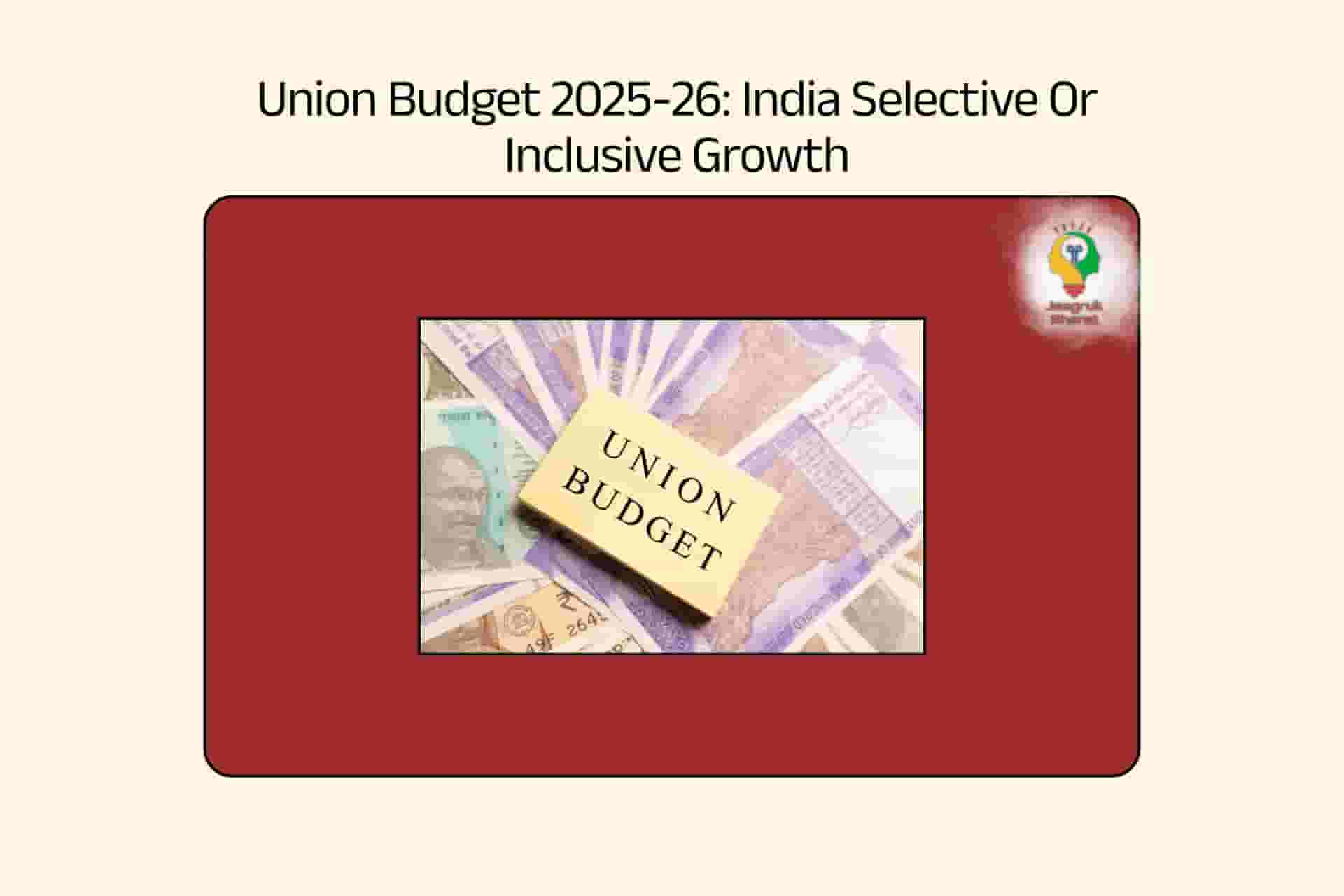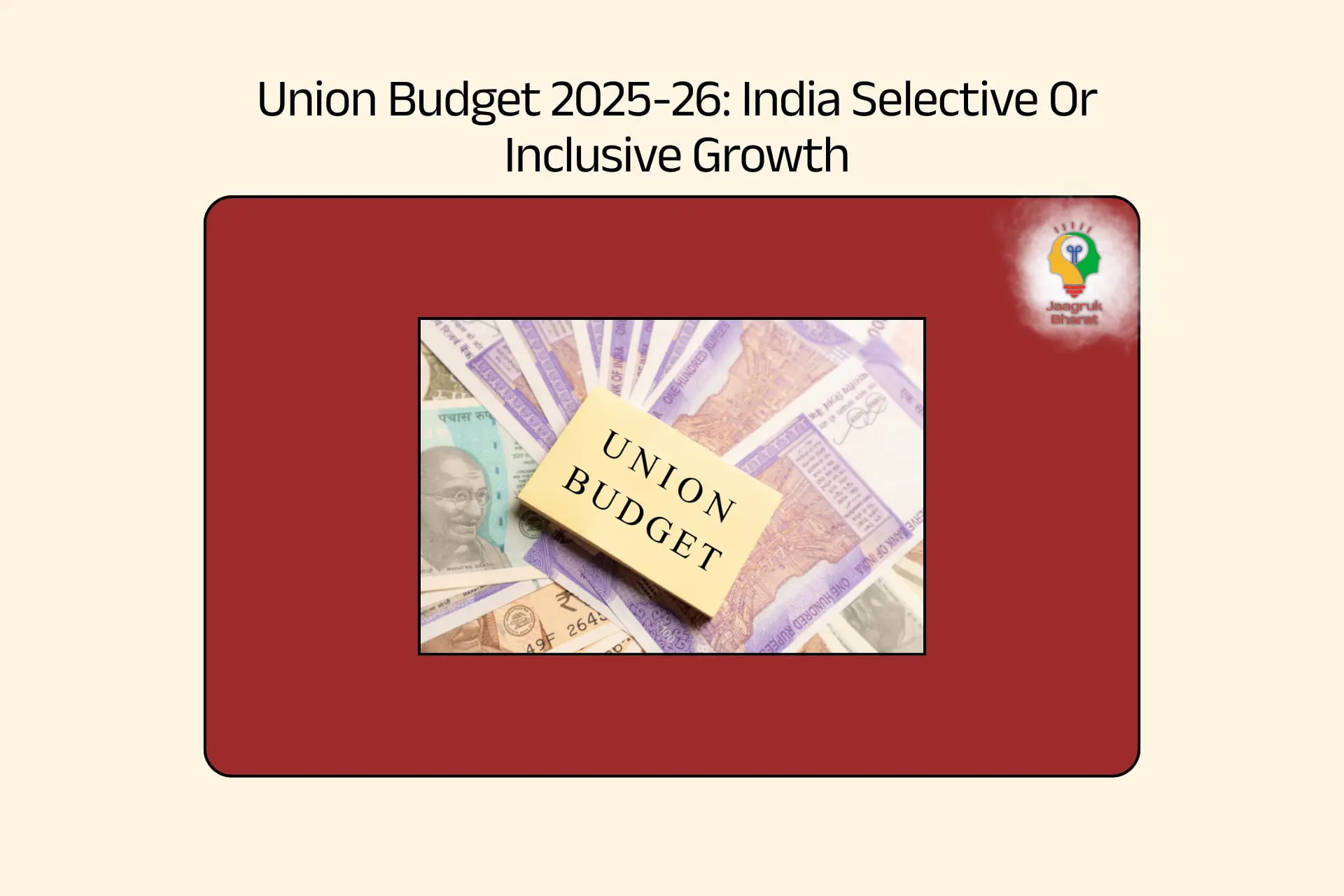Union Budget 2025-26: India Selective Or Inclusive Growth? Key Details Of The Budget And Its Economic Effects
Updated: 09-10-2025 at 4:54 AM
1k


For the year 2025-25 session, the Union Budget plan brought forward by Nirmala Sitharaman as the Union Finance Minister there is a promise to develop economic and technological sectors alongside job formation. The budget was described as an Atmanirbhar Bharat by insiders but its main focus stayed centred on corporate benefits instead of middle-class support. The budget offers beneficial tax reforms alongside infrastructure development innovations alongside other nurturing initiatives which do not seem strong on financial responsibility.
But is it inclusive? Let us identify the key announcements and analyze their efficiency.
Read More: Union Budget 2025-26: Is India’s Gender Budget Enough For Women’s Economic Empowerment
Taxation Reforms: Genuine Relief Or Cosmetic Changes?
While the governments have brought several reforms in taxation that aim at easing compliance and providing relief for individuals and corporations, some critics are of the view that the benefits accrue more to the higher classes than to the middle class.
Key Taxation Announcements:
| Reform | Details |
|---|---|
| Zero Income Tax up to ₹12 Lakh | Salaried individuals earning up to ₹12 lakh annually will not pay any income tax under the new tax regime. The old tax regime remains unchanged. |
| TDS and TCS Rationalisation | The tax deducted at source (TDS) on senior citizens’ bank interest has increased from ₹50,000 to ₹1 lakh. TDS on rent has been raised from ₹2.4 lakh to ₹6 lakh. |
| National Savings Scheme (NSS) Exemption | Withdrawals from NSS after August 29, 2024, will be tax-free. |
| Income Tax Return Filing Extension | Taxpayers now have four years instead of two to file updated returns. |
| New Income Tax Bill | A fresh tax overhaul plan will enter the next parliamentary stage for review and approval. |
Agriculture and Rural Development: A Game Changer Or Political Gimmick?
Through tax and agricultural sector reforms plus manufacturing changes the Union Budget of 2025-26 seeks to boost economic development and create new jobs for the nation. Although the government claims it includes everyone in its approach critics state it needs actual steps that aid middle-class citizens. The article gives a complete insight into all major economic news releases.
Some Major Reforms in Agriculture:
-
PM Dhan-Dhanya Krishi Yojana: A flagship scheme for productivity enhancement on farms for employment generation in rural areas.
-
Kisan Credit Card Expansion: Provision of short-term credits to 7.7 crore farmers under the KCC scheme. This will benefit fishermen and dairy farmers as well, providing loans up to ₹5 lakh.
-
Pulses Self-Reliance Mission: A six-year proactive domestic production increase concerning Tur, Urad, and Masoor to progressively diminish dependency on imports.
-
Makhana Board in Bihar: The board shall aim to develop and promote the production and export of Makhana, from which thousands of farmers stand to benefit.
Analysis:
The programs do not deliver as effectively as past planning such as PM-KISAN and Fasal Bima Yojana. Experts state these programs fail because they need proper market and infrastructure resources to succeed.
Science And Innovation: India’s Bid To Become A Tech Superpower?
The budget mentions several chances for big investment into technology and research, which means India is aspiring to set itself up as a leading international hub for innovation.
Huge R&D investments:
-
Research, Development & Innovation Initiative: Private sector-led innovation put through allocation of ₹20,000 crore.
-
PM Research Fellowship: 10,000 research opportunities in IITs and IISc.
-
Second Gene Bank: Storing 10 lakh germplasm lines to enhance food security.
Analysis:
While these allocations seem promising, India is still spending less than one per cent of GDP on research. If proper execution is not in order, then these initiatives will perhaps remain ineffective.
Industry And Manufacturing: Boosting ‘Make in India’ Or Favouring Big Corporates?
While the budget has included additional manufacturing, export policy, and semiconductor development incentives, do such policies favour corporate giants at the expense of MSMEs?
Key Announcements:
-
Production-Linked Incentive (PLI) Scheme: More subsidies for electronics and EV manufacturing.
-
Exemptions for Open Cells & Lithium Batteries: TV and mobile phone manufacturer cost reduction.
-
Shipbuilding & MRO incentives: Ten years of goods used in shipbuilding tax exemption.
-
Semiconductor Mission: ₹76,000 crore for semiconductor manufacturing with only 100 new jobs expected in 2025-2026.
Analysis:
While these measures help industrial growth, some worry they may fail to trickle down to the smaller businesses but remain limited to the larger corporations.
Read More: Increased Funds For Saksham Anganwadi & POSHAN 2.0: Union Budget 2025
Export & Trade Policies: Can India Compete Globally?
New trade facilitation measures are being put in place by the government, but are they enough to make India the world's manufacturing hub?
Key Trade Announcements:
-
Extension of Export Time Limits: Provides export flexibility for repaired railway goodies.
-
Leather Industry Incentive: Wet blue leather is exempt from customs duty.
-
Quarterly IGCR Compliance: Import General Customs Rules amended for easier compliance.
Analysis:
Such changes are commendable; however, high logistics costs and bureaucratic delays remain a hindrance for India to compete around the globe.
Conclusion
The Union Budget 2025-26 is audacious and daring, but that very factor poses yet another execution challenge. The Government emphasises tax relief, agriculture, and industrial augmentation, while according to several critics, the common middle class and micro, small, and medium enterprises would once again be subjected to neglect. To create changes for the future, the credible implementation of these meticulously curated schemes with transparency is the foremost necessity along with economic strategies for the long haul.
Get the latest updates on government schemes and policies with Jaagruk Bharat. Join India's biggest Jaagruk Bharat community. Share your thoughts, questions, and your favourite topics for us to cover.
0
0
1k
0
0
1k Views
0
No comments available





Our Company
Home
About
T&C
Privacy Policy
Eula
Disclaimer Policy
Code of Ethics
Contact Us
Cancellation & Refund Policy
Categories
Women
Insurance
Finance
Tax
Travel
Transport & Infrastructure
Food
Entertainment
Communication
Government ID Cards
E-commerce
Traffic guidelines
Miscellaneous
Housing and Sanitation
Sports
Startup
Environment and Safety
Education
Agriculture
Social cause
Employment
Disclaimer: Jaagruk Bharat is a private organization offering support for documentation and government scheme access. We are not affiliated with any government body. Official services are available on respective government portals. Our goal is to make processes easier and more accessible for citizens.
All Copyrights are reserved by Jaagruk Bharat